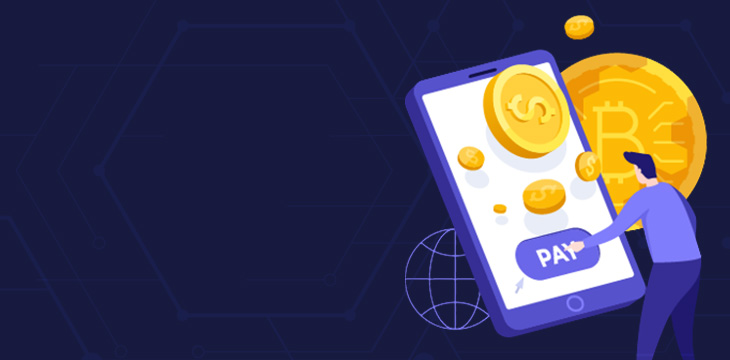Tiny payments are changing the expenses landscape. Micropayments and nanopayments are not entirely new concepts and practices. But with the introduction of Bitcoin, it has solidified because of its ability to use blockchain technology.
Micropayments are an untapped market segment due to the limitations of traditional payment rails such as visas. But given the advent and future of the Internet of Things (IoT) and microservices, micropayments will be in demand more than ever.
The market for these tiny payments could grow bigger each year. To ignore micropayments is almost like saying that the internet is “just another form of mail.”
Microservices will inevitably expand, and it’s only fitting to see the evolution of money. This infographic will give a top-to-bottom guide to micropayments and nanopayments and explore how they are changing online transactions.

What is micropayment?
Micropayments are small financial transactions typically conducted online. The size or definition of a micropayment varies, but it is usually less than a dollar, sometimes even less than a cent.
The definition depends on the payment processor and the company. For example, some organizations consider all transactions under $1 as micropayments, while others only recognize transactions under $5, $10, or occasionally even $20 as micropayments.
The purpose of micropayments is quite broad. First, micropayments are a way to take advantage of the internet by making it easier to distribute royalties, online tips, digital rights, in-game purchases, and even to manage devices connected by the Internet of Things (IoT).
The financial technology industry commits to making economic goods affordable and available to everyone. However, the costs for consumers are dropping to only a few cents because of technological advances. Although this is economical for consumers, it can also become a problem. Credit card issuers and traditional transaction fee-based systems cannot process transactions of such low rates, due to overheads
Because of this, micropayments came into play. During the 1960s, Ted Nelson, a technology futurist and philosopher, coined the term “micropayment.” He envisioned that these tiny financial transactions, as small as a tenth of a penny, would be a way to spend for online content’s copyrights.
The remarkable thing about micropayments is that they enable the development of low-cost networks. There is still much room for growth, but blockchain technology is paving the way to making these transactions secure and cost-effective. Users can buy fractional unit amounts of goods and services through cashless transactions such as micropayment bitcoin.
What is nanopayment?
A nano payment is just like a micropayment. However, the differences are that nano payments are much smaller, and users only pay as they go. Consumers can quickly turn them on and off. A concrete example of this is when you look at online copyrighted photos. It may seem insignificant, but actions like this cost something like 0.1 cents.
Micro and nanopayments operate using Satoshi in the digital world. People use Satoshi because it’s Bitcoin’s most minor division. One bitcoin consists of 100,000,000 Satoshi. Satoshi is also the Bitcoin SV network’s fundamental unit of exchange. To learn more about this, you can check out bitcoin for beginners.
Another instance nanopayments come in handy is when consumers want to read a single article rather than paying an entire month’s worth of subscription. The tiny transaction becomes a nanopayment. In a way, nanopayments follow a pay-per-use model. They come in such small amounts that they seem irrelevant, but they are not free.
The development of distributed blockchain ledgers for cryptocurrencies resulted in a sharp decline in transaction costs. In addition, building nanopayment networks made hundreds of new fractional payment models possible.
Traditionally, the cost of administering online services like email, news, and photo uploading is passed to marketers. However, that can change. Micropayment systems develop prosperous business models based on charges under $1. These developments make small transactions convenient, efficient, and accessible for consumers.
The Importance of Micropayments and Nanopayments
There are many reasons why micropayments and nano payments are important in Bitcoin.
- Instant and global payments
Making such tiny payments in the digital space is a bit more challenging. It becomes impossible for credit card companies like Mastercard and Visa to process low amounts.
Although micropayments and nanopayments existed before Bitcoin, they were not feasible in the digital world. These transactions only became possible when Bitcoin stepped in. Crash. co-founder, Isaac Morehouse, says, “Bitcoin made instant, global micropayments with no delay, no settlement or anything like that, possible.”
- Multiple payments at once
The combination of micropayments or nanopayments and Bitcoin meets the level of convenience consumers typically need today. They can seamlessly multi-task, performing numerous transactions at once. In particular, this technology can process up to hundreds of tiny payments simultaneously and in real time. It’s one of the reasons why more consumers should be paying attention to micropayments and nanopayments.
- Low transaction fees
Many consumers find using credit or debit cards and other banking systems to handle micropayment processing impractical. These companies charge way too much for such small transactions. With Bitcoin, you can enjoy more affordable transaction fees.
The Bitcoin protocol and blockchain technology eliminate third parties in the payment process. The absence of a middleman payment processor makes these operations as low-cost as possible.
- Unbounded block sizes
Unbounded block sizes are vital in making micropayments possible. The unlimited block sizes also make way for the Bitcoin Satoshi Vision (BSV) network to manage large volumes of unprecedented transactions while maintaining low operation fees.
The BSV blockchain is powered by the original Bitcoin system based on the UTXO (unspent transaction output) architecture. If you were holding unspent outputs of Satoshi tokens, you could make transactions as if you were dealing with real cash. You can split or combine these denominations just as you would with conventional coins and notes.
As part of micropayment processing, it will cover the transaction fee that pays the block’s miner before any change goes back to you.
- From “dust” to a spendable amount
When you make a payment using Satoshi, amounts too low to be included in a block is referred to as “dust” since the amount is so little compared to the network’s transaction fees that it becomes uneconomical to spend. With BSV, although small, dust can become spendable. “Consolidation transactions” are the way around the limitations of dust.
These transactions fall under a specific category where many inputs with dust are combined and sent to a miner who combines all the pieces into one output that exceeds the dust limit.
Even though the miner would be providing this service free of charge, they would still gain because it would make their datasets easier to manage. As a result, they only need to log one dollar rather than keep track of 100 one-penny transactions.
- Tradable and trackable
Using Bitcoin in micro and nanopayments offers users and businesses complete control of their money. Only you can transfer money from your digital wallet to any service because a personal Bitcoin address private key protects it from unauthorized transactions.
Not only is your wallet secured, but the nanopayment system also provides transparency over every small transaction entering and leaving your wallet, regardless of how little or frequent it may be. Because of this, it’s easier to track where your money is going.
It is also possible to tokenize revenue shares and trade them with other users. With this setup, you can tap into making this your emergency source of cash.
- Data as money
If you ever consider making money out of information, micropayments are the way. It’s as simple as leveraging the ability to share bits of data for a fee. For example, you can charge one cent for someone collecting data for a study to see your demographic profile.
Micropayments, coupled with zero-knowledge proofs and other bitcoin technologies for selective data sharing and recording, make this new market possible.
- Smaller paywalls per access
Since micropayments are small, they entail tiny paywalls. These allow you and any consumer out there to practice pay-per-use or view. For example, if you want to read one article from a digital magazine, you pay for the one time you will look at it. This way, you can avoid expensive monthly subscriptions or membership fees.
6 Business Models That Are Benefiting from Tiny Payments
Tiny payments led to the development of various business models. At the same time, these structures benefited from micro and nano payments.
- Metered payments
Micropayments are similar to how taxis use meters to ask passengers for an exact amount. Consumers only pay for what they consume, view, listen to, etc. Tiny payments allow you to skip monthly, yearly, or fixed subscriptions. There’s also no need for accounting, batch invoicing, and bookkeeping.
- Split payments
One of the powerful features of micropayments is the ability to make multiple and split payments. Micropayment processing covers all sorts of transactions, such as auto payroll and revenue shares. These are done simultaneously in real time. Because of this functionality, other business models developed. For instance, gaming websites can facilitate peer-to-peer referrals using micropayments.
- Tradable revenue shares
Another structure developed in micropayment bitcoin is the option to convert and trade revenue shares. Where the revenue is from some web service which has a micropayment revenue model. For example, you can convert your shares into tokens, then exchange them for cash.
- Monetized data
You can charge others to view your information or data. For example, people make tiny payments to access information from databases such as blockchains. Advertisers can pay to access your shopping information directly, without going through the model of paying Google or Facebook to steal it.
- Nano paywalls
A paywall is a technique for limiting access to content and information, such as news. Someone who wants full disclosure must have a paid subscription.
On the contrary, nano paywalls apply to publishers who charge cheaper fees or micropayments per article. Imagine paying 0.1cents for every page that your web browser scrolls down and loads. Nano paywalls are also helpful and cost-efficient in cutting off spam and bots.
- Ad-free web browsing
You can opt-out of all advertisements by charging micropayments for search and web page retrieval. As a result, you can surf the internet without popups bothering you. In this way, your surfing time has no distractions, and the internet still gets monetized.
Know the Future of Tiny Payments
Micropayments are small online financial transactions that value less than a dollar, while nanopayments are tinier payments that run on a pay-per-use structure. These transactions are possible using Bitcoin, specifically Satoshi. These tiny payments have significant roles in varying industries because they offer a more convenient and transparent way of making small transactions while maintaining low rates.
Several business models were inspired by micro and nanopayments, such as metered and split payments, nano paywalls, and monetized data. If you want to understand Bitcoin and blockchain further, head to the perfect place for beginners: CoinGeek.
Recommended for you
You can earn money when you explore the world of Bitcoin and understand its intricacies. Once you get the hang
Gaming is a popular pastime that many people have come to love. Since the simple days of Tetris, Mario, and

 12-26-2025
12-26-2025 


